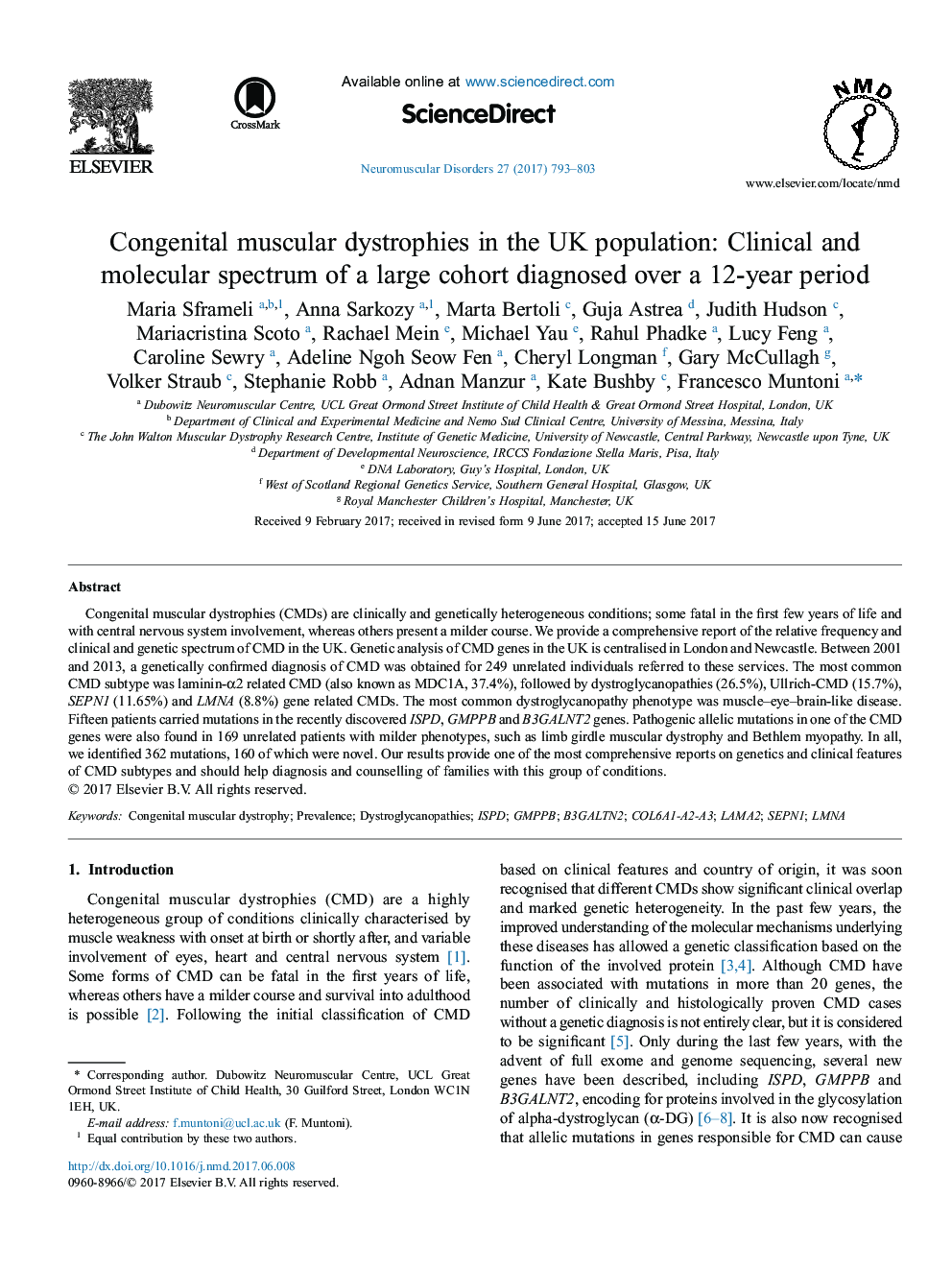| Article ID | Journal | Published Year | Pages | File Type |
|---|---|---|---|---|
| 5631974 | Neuromuscular Disorders | 2017 | 11 Pages |
â¢We report the relative frequency, clinical and genetic spectrum of CMD in the UK.â¢We describe clinical and molecular data for 249 unrelated CMD patients.â¢MCD1A is the prevalent CMD in the UK followed by dystroglycanopathies and Ullrich CMD.â¢We report 363 mutations in CMD genes, 160 of which are novel.
Congenital muscular dystrophies (CMDs) are clinically and genetically heterogeneous conditions; some fatal in the first few years of life and with central nervous system involvement, whereas others present a milder course. We provide a comprehensive report of the relative frequency and clinical and genetic spectrum of CMD in the UK. Genetic analysis of CMD genes in the UK is centralised in London and Newcastle. Between 2001 and 2013, a genetically confirmed diagnosis of CMD was obtained for 249 unrelated individuals referred to these services. The most common CMD subtype was laminin-α2 related CMD (also known as MDC1A, 37.4%), followed by dystroglycanopathies (26.5%), Ullrich-CMD (15.7%), SEPN1 (11.65%) and LMNA (8.8%) gene related CMDs. The most common dystroglycanopathy phenotype was muscle-eye-brain-like disease. Fifteen patients carried mutations in the recently discovered ISPD, GMPPB and B3GALNT2 genes. Pathogenic allelic mutations in one of the CMD genes were also found in 169 unrelated patients with milder phenotypes, such as limb girdle muscular dystrophy and Bethlem myopathy. In all, we identified 362 mutations, 160 of which were novel. Our results provide one of the most comprehensive reports on genetics and clinical features of CMD subtypes and should help diagnosis and counselling of families with this group of conditions.
